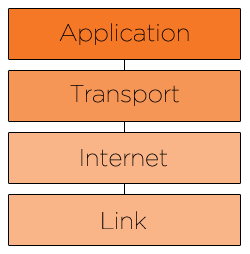Introduction to TCP/IP

You don’t have to be a networking guru to have heard of TCP/IP, if you are a networking guru and have never heard of TCP/IP it may be time for you to consider a new career path. Any way, you have probably heard of TCP/IP before but probably know very little if anything about it.
This article will be benficial to anyone who is considering enhancing their resume with a CompTIA Network+ Certification.
Introduction to TCP/IP
TCP/IP (Transmission Control Protocol / Internet Protocol), also known as the Internet Protocol Suite, is a set of protocols used to communicate between computers over the Internet and other similiar networks. It defines how computers and other devices should be connected to the Internet and how data should be transmitted between these devices.
In the early 1970’s the Defense Advanced Research Projects Agency (DARPA) began research and development that resulted in TCP/IP. Robert E. Kahn and Vincent Cerf were the primary developers of the protocal. The first successful communication test was performed in 1975 between Stanford and University College London. Successful testing continued and in March 1982 the US Department of Defense set TCP/IP as the standard for computer networking in the military.
The Complete Suite
The Internet Protocol Suite is commonly referred to as TCP/IP because they are the two primary protocols used but there are a few other protocols involved.
TCP (Transmission Control Protocol) – Controls communication between applications and verifies what was received is what was sent.
IP (Internet Protocol) – Manages the addressing part of the communication to ensure packets get to the correct computer.
DHCP (Dynamic Host Configuration Protocol) – A method for automating the assignment of IP addresses.
UDP (User Datagram Protocol) – Connectionless protocol primarily used for communication over local networks.
ICMP (Internet Control Message Protocol) – A protocol used for errors and statistics.
Layers of TCP/IP
 TCP/IP is made up of four layers which consist of the Application Layer, Transport Layer, Network Layer, and Link Layer.
TCP/IP is made up of four layers which consist of the Application Layer, Transport Layer, Network Layer, and Link Layer.
Application Layer
The top layer is the Application Layer. It is made up of protocols such as HTTP, FTP, IMAP, POP3, SMTP and a few others. Most of these protocols should sound familiar to the average internet user.
Transport Layer
The next layer is the Transport Layer and is made up of TCP, UDP, DCCP, SCTP, IL, RUDP, and RSVP. The two primary protocols in this layer are TCP and UDP. This layer is responsible for end-to-end message transfer as well as segmentation, congestion control, error control, application addressing with port numbers, and flow control.
Internet Layer
The Internet layer is the third layer. It is made up of IP (IPv4, IPv6), ICMP, IGMP, and ICMPv6. This layer’s primary responsibilities are host addressing as well as identification and packet routing.
Link Layer
The last layer is the Link Layer which contains ARP, RARP, OSPF (IPv4/IPv6), IS-IS, and NDP. This layer is used to move packets between the Internet Layer of different hosts on the same link.
Conclusion
This Introduction to TCP/IP was inteded to give you a jumping off point for those of you interested in persuing a career in computer networking or already have a career and are interested in a certification. We hope that you have found it useful Please continue to read TechKing for more great articles on networking and much more.
